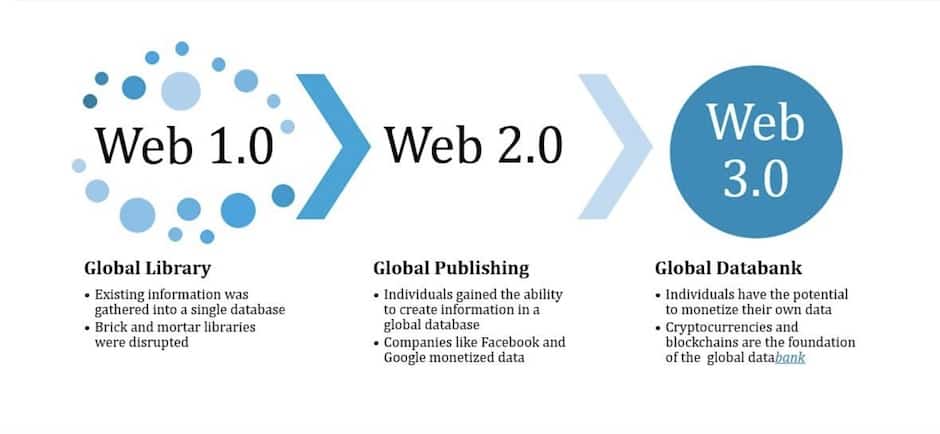We are going back to Web 1.0 with Web 3.0 and blockchain
Jaspreet Bindra
The last couple of weeks have seen a spate of horrific news about the assaults and murder of helpless, young women in Hyderabad, Unnao and other places. What added insult to this very grievous injury was what I saw in my Twitter feed: In screen after screen of outrage, horror and condemnation of this ugly incident, I could not help but notice a prominent ad of the world’s largest condom company. The sheer insensitivity was appalling, but it is very possible that this particular company did not even know about this callous error. Clearly, no employee of that company or their ad agency had decided on placing this ad there; in fact, no human being had. The ad was there because of an ‘intelligent’ algorithm deciding that the word ‘sex’ was mentioned so often in that Twitter feed, that perhaps a condom was needed. So, as per the logic built into the algorithm, this was a perfect placement for the same.
This has happened before. Global car companies have been mortified to see their latest car being advertised along with Google searches for catastrophic car accidents. Skin whitening lotions have found a perfect place to talk about themselves alongside racist YouTube videos around ‘white’ supremacy. The examples are legion, and it is not that these platforms do not care. Large social networks and search engines constantly try and tweak their machine learning algorithms and use advanced AI techniques to try mitigate this. They deploy tens of thousands of people across the world to do the thankless jobs of spotting these and other travesties which people and machines throw at them.
The problem, however, is not the technology, nor the intentions of the advertisers or even the ineffectiveness of the fact checking armies. The problem is the business model.
When the Internet was created by Tim Berners-Lee and the original architects, it was conceived of as a distributed set of computers directly communicating with each other and each sharing a bit of the load of managing and maintaining the network. This was Web 1.0, and it worked very well, but it had one problem: there was no business model around it. For instance, a Web 1.0 startup called Google was having great traffic and traction, but they were not making money. Mike Moritz of Sequoia Capital, an early investor, was reported as saying that “we really couldn’t figure out the business model, there was a period where things were looking pretty bleak”. In 2001, Google was scraping through with $85mn in revenue, and then it discovered and developed AdWords, its now legendary pay-per-click, auction-based search advertising model, backed by among the best search and monetization algorithms. 3 years later, Google went public with $2.7bn in revenue and a valuation of $23bn. In 2018, it rocketed to a $116bn ad revenue, a near trillion-dollar valuation, and, along with Facebook, controlled 60% of the global digital advertising revenue.
With Google, came Web 2.0, with two fundamental advances over 1.0: new business models, and increasing centralization of the Internet. Advertising is the chief business model of this version, but along with it is marketplaces (Amazon), shared economy (Uber), content (Netflix), and SaaS (Salesforce, and progressively, Microsoft). The Web 2.0 companies make a lot of money now, but increasingly only a few of them do, and these few are getting even fewer. The Internet, driven by the powerful Web 2.0 business models led by hyper-targeted advertising, is getting more centralized. And, the algorithms rule these models, resulting in the travesties like the condom and car ads.
However, there is a backlash building up now – both against the mindless selling of our personal data, as well as the uber-centralization of the Internet in the hands of a few multi-billionaires. In response, new business models are emerging, heralding the emergence of Web 3.0 – a revolution which promises to return the internet to the hands of users. The technologies it leverages are newer peer-to-peer technologies like blockchains to build services which allow explicit consent over data and distribution of revenue amongst all contributors. Because blockchains, and other such technologies, are inherently decentralised and P2P, they provide a hard technology ceiling to the accumulation of power and data in the hands of a few.
While these new technologies have been a revelation, the real forces driving Web 3.0 are new business models. Bitcoin and Ethereum are one such, where there is now a currency or an incentive to monetize content, where people pay for services that they want using micro-transactions rather than a giant, faceless entity paying for it through advertising, and selling them in the bargain. Nothing is free on the Internet: if it is, then you are the product.
Web 2.0 passed through a long, difficult journey to success, Web 3.0 will be as arduous and protracted. But the revolution has begun, and thousands of startups – Steemit and 1Ramp in social networking, Mastodon and FireChat in messaging, Zokama and LivePeer in Video – have started heralding it. What this will mean is that the users will choose what they get free, in exchange for selling innocuous parts of themselves and their data, and what they pay for, and get paid for, using these powerful new incentive mechanisms.
So, Web 3.0 is taking us back to Web 1.0, but with a new, decentralised business model. Hopefully then, with the lessening of the sole dependence on advertising and the soulless targeting by algorithms, we will see less of the shocking advertisements I saw. While the original crime will remain unpardonable, at least the use of it to generate money will cease.
The author publishes A fortnightly column on technology In The Mint which is a leading Indian publication
For more details Click here
(This appeared as a column in Mint dated December 12, 2019)
FAQ
Blockchain technology has made significant strides in its development and widespread adoption in recent years. The possibilities of blockchain technology are endless. And not only in money transfers, banking services and decentralized marketplaces. Blockchain is expected to expand into many more areas, including the Internet of Things (IoT), extensive data analysis, law-making/enforcement, and finance. Blockchain technology will fundamentally change how we live and work in the future.
For businesses, blockchain technology can be seen as a type of next-generation business process improvement software. Collaborative technology, such as blockchain, has the ability to improve the business processes that occur between companies, drastically lowering the “cost of trust”, and may offer significantly higher returns for each investment ruppee spent than most traditional internal investments.
Blockchain is a reliable way of storing data about all types of transactions, and companies from Walmart, Pfizer, AIG, Siemens, Unilever, IBM and many more are using this technology to their benefit. Some of the industries that blockchain can be used in are banking and finance, currency, healthcare, property records, small contracts, supply chains and voting.


